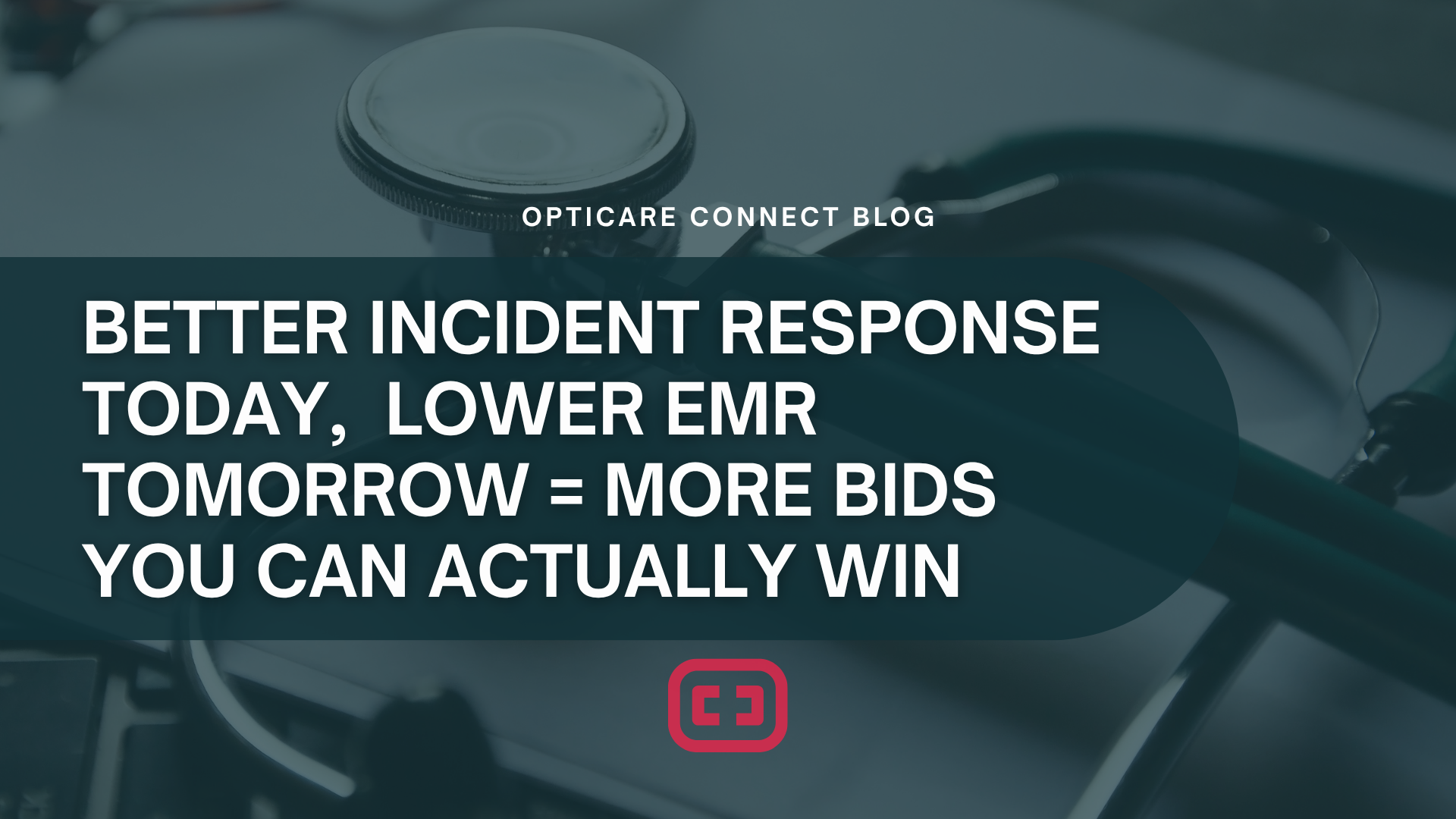
Let's talk about something that keeps contractors up at night: your EMR.
If you’ve ever lost out on a contract because your Experience Modification Rate was just a bit too high, you know exactly how frustrating that feels. You had the best price, the right experience, maybe even the best crew, but that number knocked you out of the race before anyone even looked at your proposal.
Here’s what a lot of companies don't realize: the way you handle workplace injuries right now is directly shaping whether you’ll be able to bid on projects six months or a year from now.
Your EMR is basically a report card that tells everyone in the industry how safe your workplace is compared to others like you. Fall below a 1.0? You’re doing better than average. Above 1.0?? Well, that’s when doors start closing in your face.
According to industry standards, an EMR of 1.0 is average, meaning you're more or less risky than similar companies. But here’s where it gets real: if you’re sitting at a 1.15, you’re paying 15% more for workers’ comp insurance, and many government contracts won't even let you bid.
Every time someone gets hurt on the job site, you’re at a crossroads. How you respond in those first few minutes can mean the difference between a major blip and a major hit to your mod rate. (And those hits add up fast!)
Picture this: It’s Tuesday afternoon, and one of your guys cuts his hand. Should he go to the ER? Urgent Care? Someone makes a call and sends him to the ER. He sits around waiting, and eventually ends up in the emergency room for three hours (or more). The whole thing costs way more than it should have, he misses days off work, and now you’ve got yourself a lost-time incident that’s going to haunt your EMR for the next three years.
The problem isn't that injuries occur; the problem is what happens after the injury. When people end up getting the wrong level of care, small problems become expensive problems.
According to the Bureau of Labor Statistics, there were over 2.6 million nonfatal workplace injuries in 2023 alone. The problem isn’t that the injuries occur; the problem is what happens after the injury.
Think about how much an unnecessary ER visit costs. Not just the bill, but how it affects your workers' comp premiums and your modification rate. When someone with a cut gets routed to the ER instead of quick guidance from an occupational medicine specialist, you’re paying for it now and later.
The National Council on Compensation Insurance tracks how these costs impact your modification rate. Not just the bill, but how it affects workers’ comp premiums and your modification rate for the next three years.
The kicker is, a lot of those ER visits weren’t necessary. With the right assessment up front, many workplace injuries can be handled more appropriately, more cost-effectively, and with better outcomes for everyone.
What if your injured employee could connect with a licensed occupational medicine provider within minutes? Virtual assessment means your team member is talking face-to-face with someone who deals with workplace injuries all day, every day. Someone who can quickly assess whether this needs emergency care, urgent care, or first-aid.
Why does this matter?
You’re getting the right level of care. Not every injury needs an ER. Getting proper guidance right away means people go where they actually need to go.
Documentation happens correctly. When medical professionals are involved immediately, you’ve got proper records that hold up for OSHA compliance and insurance purposes.
Follow-up actually happens. Too often, we see injuries get worse because no one checks in to make sure healing is progressing. Having ongoing support keeps smaller issues from becoming bigger ones.
People get back to work faster. When injuries are managed properly from the start, with appropriate follow-up, you’re looking at shorter recovery times and less lost productivity.
Many of the best contracts out there have EMR requirements built right into the bid specs. When your EMR is at 1.15, you’re locked out. It doesn't matter how competitive your pricing is or how solid your track record is.
Insurance carriers use your EMR as a multiplier on your base workers’ comp premium. A company with a 1.25 EMR pays 25% more for every dollar of coverage compared to a company with 1.0 rating. Over time, that difference can cost you hundreds of thousands of dollars (money that could be going towards growth instead of inflated premiums).
The difference between 1.1 and 0.9 could literally represent the difference between landing or losing a multi-million dollar project.
H2: Building Something That Lasts
Contractors have figured out that workplace safety isn’t just about keeping people healthy. It’s about staying competitive. When you invest in better incident response, you’re building advantages that stick around
Industry data shows that proactive safety programs consistently reduce both the frequency and severity of workplace injuries. The companies out there winning the biggest projects didn’t get there by accident. They built systems that protect their people and their ability to compete.
Your EMR isn't just a number on an insurance form. It’s your ticket to projects that can really move your business forward. Every injury that happens on your watch is a chance to either help or hurt that number.
So the real question isn't whether better incident response is worth the investment. It’s whether you can afford to keep doing things the old way.